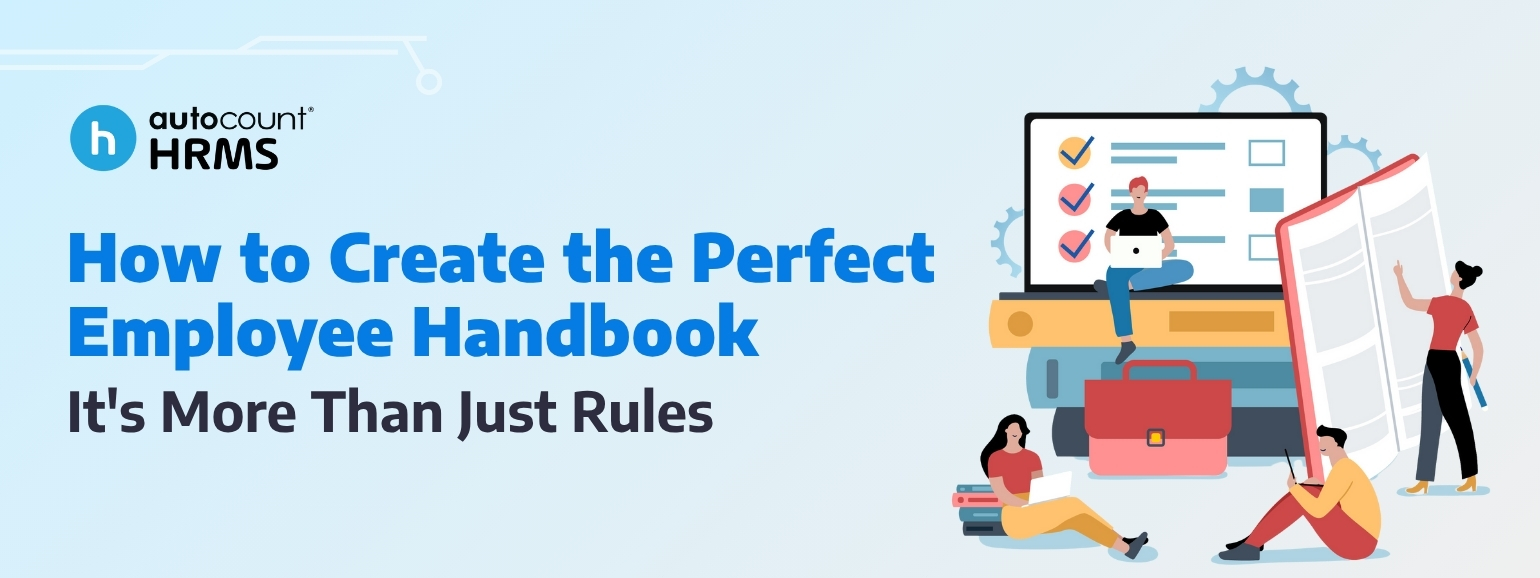
How to Create the Perfect Employee Handbook: It's More Than Just Rules
Key Takeaways
- An employee handbook defines the company culture, outlines policies, and establishes expectations.
- Start with your mission, vision, and values before listing compliance rules.
- Include clear codes of conduct, leave, pay, and benefit details, including anti-harassment and equal opportunity policies.
- Add legal disclaimers and review for compliance with Malaysia’s Employment Act 1955.
- Keep it digital, simple, and updated regularly to reflect current policies.
- Require employees to sign an acknowledgment form after reading.
1. Why Every Company Needs an Employee Handbook
An employee handbook is more than just a list of company rules; it’s the foundation of your workplace culture and compliance. In Malaysia, many businesses still operate without a formal handbook, often relying on informal agreements or outdated documents.
However, a well-crafted handbook serves multiple purposes: it protects your company legally, sets expectations clearly, and builds trust between management and employees.
Think of it as your company’s official welcome letter, code of conduct, and culture guide all in one. It defines the relationship between your organisation and its team members, ensuring consistency, professionalism, and alignment across all levels.
2. Start With Culture Before Compliance
The first step in creating a great handbook is to focus on culture before compliance. Start the document with a warm welcome note from a key leader like your CEO or Founder. This sets a personal tone and helps new hires feel emotionally connected to the company’s purpose.
Follow this with a clear statement of your Mission, Vision, and Core Values. This section should answer the question: Why do we exist, and what do we stand for?
You can also include:
- A short company history
- An organisational structure overview
- A message about the company’s goals for growth and teamwork
This opening reminds employees that they are part of something bigger and that every rule or policy that follows exists to support a shared purpose.
3. Define the Standards: Employee Code of Conduct
Once your cultural foundation is set, move into the Employee Standards of Conduct. This section outlines the expected behavior, ethics, and professionalism within your company.
Include essential HR policy elements such as:
- Anti-harassment, anti-discrimination, and equal opportunity statements
- Attendance and punctuality expectations
- Dress code and presentation standards
- Use of company property (laptops, email, internet, social media)
To ensure transparency, describe what constitutes a policy violation and explain the disciplinary action process, from verbal warnings to termination. This ensures all employees are treated fairly and management decisions are consistent across the board.
4. Clarify Compensation, Leave, and Employee Benefits
The next core section is your Compensation and Benefits guide. Employees will refer to this section most frequently, so make it clear, detailed, and easy to navigate.
Include:
- Payroll schedule and payment process
- Overtime and performance review policies
- Promotion procedures
Under Leave Policies, outline:
- How Annual Leave (AL) is accrued and used
- Public and company holidays
- Parental, medical, and bereavement leave procedures
- Outline the company’s official working hours and standard workweek schedule
Finally, summarise additional employee benefits, such as:
- Health or medical insurance
- Retirement or EPF contribution policies
- Employee wellness programs, training subsidies, or tuition support
- Allowances such as subsistence allowance, travelling allowance, and so on. (only if applicable)
For public holidays and working hours rules, you can refer to governmental guidance via Jabatan Tenaga Kerja Semenanjung Malaysia (JTKSM) “Acts & Guidelines.”
5. Include Legal Disclaimers and Policy Flexibility
While your handbook should be easy to read, it must also be legally sound.
Key disclaimers to include:
- A statement clarifying that the handbook is not a contract but a summary of current policies.
- A Non-Contractual Disclaimer stating that the employment contract remains the binding document.
- A clause that the company reserves the right to modify or revoke policies when necessary.
If your company operates under specific laws, collective agreements, or unique industry regulations, note these clearly. Always have your document reviewed by HR or legal professionals to ensure accuracy and compliance with Malaysian labour laws.
6. Make It Practical, Digital, and Easy to Use
The best handbooks are readable, searchable, and accessible. Avoid long-winded legal jargon; instead, use concise, conversational language.
Useful tips:
- Create a digital-first format (PDF or HR portal)
- Use a clear Table of Contents
- Add bullet points and short sections for easy scanning
This ensures employees actually use the handbook rather than ignoring it.
7. End With Acknowledgment and Accountability
A great handbook ends with an Employee Acknowledgment Form. Require all employees (both new and existing) to sign and date this form to confirm they have received, read, and understood the handbook contents.
Keep these forms as part of their personnel records for future reference. This simple step ensures accountability and strengthens your company’s legal protection.
Transform Your Handbook Into a Powerful HR Tool
A well-crafted employee handbook isn’t just a rulebook. It forms the basic foundation for managing employees effectively. It sets clear expectations, promotes fairness, and reinforces your company culture.
By blending warmth, structure, and legal compliance, your handbook becomes a living document that grows with your organisation, empowering your team and protecting your business.
Don’t let your employee handbook stay outdated. Digitise, manage, and track employee policies easily with AutoCount HRMS. Get a free demo today.